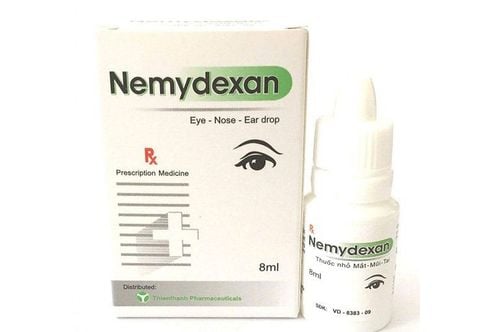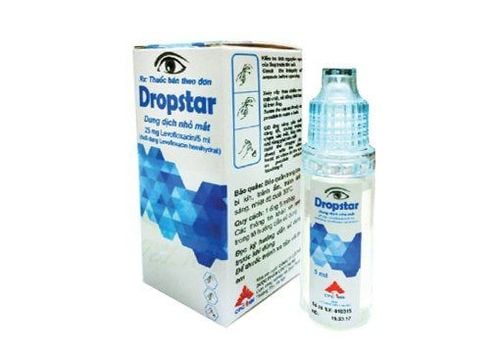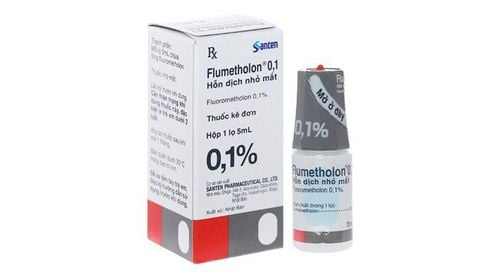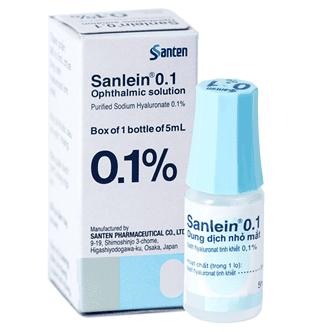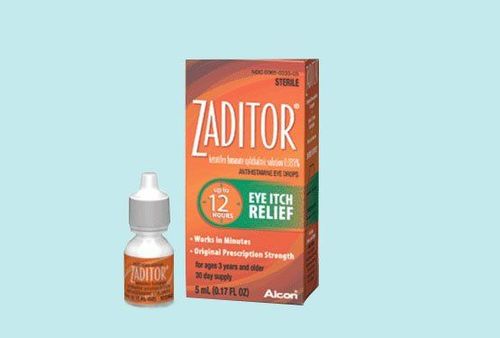This is an automatically translated article.
Dorzolamide is a medicine for treating glaucoma, in the form of eye drops. Using Dorzolamide can cause some unwanted side effects, so patients need to take the drug exactly as prescribed by the doctor.
1. Indications of the drug Dorzolamide
Dorzolamide is currently indicated for the treatment of glaucoma in cases of pseudo-glaucoma (PXF), open-angle glaucoma or ocular hypertension. Patients can combine Dorzolamide with beta-blockers. If beta-blockers are contraindicated, dorzolamide can be used as monotherapy.
2. When is Dorzolamide contraindicated?
Contraindications to using Dorzolamide in humans:
Hypersensitivity to the ingredients and excipients contained in the drug Dorzolamide. Severe kidney failure. Hyperchloremic acidosis.
3. Dosage and how to take Dorzolamide
How to use: Dorzolamide is used by eye drops. Patients should wash their hands thoroughly and dry them before applying the drops. Be careful not to let the tip of the vial touch your eyes, as this may cause inflammation around or damage your eyes.
Dosage:
For adults
When using monotherapy: 1 drop of Dorzolamide x 3 times/day. When combining Dorzolamide with beta-blockers: 1 drop of Dorzolamide x 2 times/day. For children
When using monotherapy: 1 drop of Dorzolamide x 3 times / day. When combining Dorzolamide with beta-blockers (children > 2 years): 1 drop of Dorzolamide x 2 times / day. Note: Dorzolamide dosage above is for reference only. The specific dose of Dorzolamide depends on the condition and the progression of the disease. To get the right dose of Dorzolamide, patients should consult their doctor or healthcare professional.
4. Dorzolamide side effects
During the use of Dorzolamide, patients may still experience side effects such as:
Common: Sensation of heat, headache, stinging in the eyes, corneal surface inflammation, conjunctivitis, lacrimation, eyelid inflammation, eyelid irritation, itchy eyes, blurred vision, asthenia, bitter mouth, nausea and fatigue. Uncommon: Iritis. Rare: Dizziness, irritation (including redness, drooping eyelids, pain and myopia), dysesthesia, corneal edema, choroidal detachment after trabeculectomy, decreased visual acuity, epistaxis , dry mouth, itchy throat, hypersensitivity, contact dermatitis, toxic epidermal necrolysis, Stevens-Johnson syndrome, urolithiasis, systemic allergic reactions (including angioedema, rash, urticaria and itching, shortness of breath, bronchospasm). If you experience these symptoms, the patient should stop using Dorzolamide and notify the doctor for appropriate treatment.
5. Dorzolamide drug interactions
Dorzolamide may have an interaction reaction if taken concomitantly with an oral carbonic anhydrase inhibitor. To avoid interactions, before being prescribed Dorzolamide, the patient should inform the doctor about the drugs they are using, including dietary supplements. The doctor will base on that to prescribe the appropriate Dorzolamide.
6. Treatment for forgetting or overdose
Missed dose:
In case of missed dose of Dorzolamide, it is advisable to supplement as soon as possible. However, if it is almost time for the next dose, skip the missed dose of Dorzolamide and use a new dose. Overdose:
When using Dorzolamide drug overdose can cause drowsiness, nausea, headache, dizziness, abnormal nightmares, fatigue, dysphagia, acidosis, electrolyte imbalance and affect to the central nervous system Patients need to stop the drug immediately and go to the nearest medical facility for timely treatment.
7. Precautions when using Dorzolamide
Use caution when using Dorzolamide for patients with liver failure, kidney stones, dry eyes or corneal damage. Patients who have recently undergone corneal trabeculectomy may experience hypotonia or choroidal tear in the eye when taking Dorzolamide. Therefore caution is required. Dorzolamide can cause dizziness and visual disturbances as side effects. Therefore do not use if you are operating machinery or driving. Pregnant and lactating women should consult their doctor before taking Dorzolamide. Do not use when Dorzolamide has signs of discoloration, mold, watery or expired. The article has provided information on what the drug Dorzolamide has, dosage and precautions for use. To ensure safety for your health and maximize the effectiveness of your treatment, you need to take Dorzolamide exactly as directed by your doctor. Store Dorzolamide in a dry place, the temperature does not exceed 30 degrees Celsius and out of the reach of small children.
Please dial HOTLINE for more information or register for an appointment HERE. Download MyVinmec app to make appointments faster and to manage your bookings easily.





